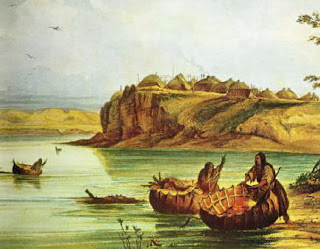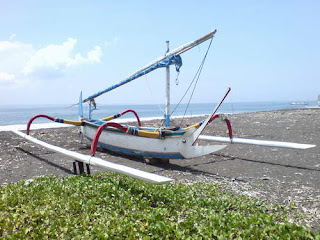
An article in Science Daily a couple months back reported on the results of a fascinating study conducted at MIT's Department of Materials Science and Engineering into the feasibility of coastwise navigation between the two great civilizations of the precolumbian Americas.
Archaeologists have theorized about trade between societies in mesoamerica and the Andes based on similarities of metalworking technology between the two regions, as well as the presence of beads made from shells indigenous to only one of the areas that showed up in the other. Furthermore, they had descriptions and illustrations by early Spanish, Portuguese and Dutch travelers to the area describing oceangoing sailing rafts. But those two items are a long way from establishing that these rafts were capable of making the multi-thousand mile voyages that would have made such trade possible by means other than overland.
Researchers built a small-scale raft approximating what is known of the local technology and tested it successfully on the Charles River, then used performance data from that test and plugged it into engineering analysis (aero- and hydrodynamics, etc.) to establish whether full-size rafts were capable of making the trip. The study showed that they could. The rafts were steered with two rows of daggerboards, selectively deployed and retracted to alter the rafts' center of lateral resistance fore or aft. (The SD article calls them centerboards, but I think that must be wrong, due probably to the reporter's unfamiliarity with the terminology. Daggerboards, of course, are deployed and retracted vertically; centerboards are hinged at the top.) Unfortunately, the article doesn't describe the sailing rig, but does state that it used a flexible mast to alter the shape of the sail and, presumably, the fore-and-aft position of the center of effort.
The research also looked into the longevity of the Ecuadoran balsa logs. Teredos (shipworms) eat balsa far faster than they eat most other shipbuilding woods, but it was found that, by traveling in the ocean proper and keeping the raft out of shallow water where the worms are most active, rafts could have survived two round trips of six to eight weeks each. Because they relied on seasonal weather patterns (presumably sailing only downwind on seasonal trade winds), only one or two voyages could be made per year by a single raft and its crew. It's not explained how the rafts were kept safe from teredos during the time between voyages.
The paper was published in the Spring 2008 issue of the Journal of Anthropological Research. The photo shows the MIT test raft. Photo Credit: Donna Coveney/MIT.













